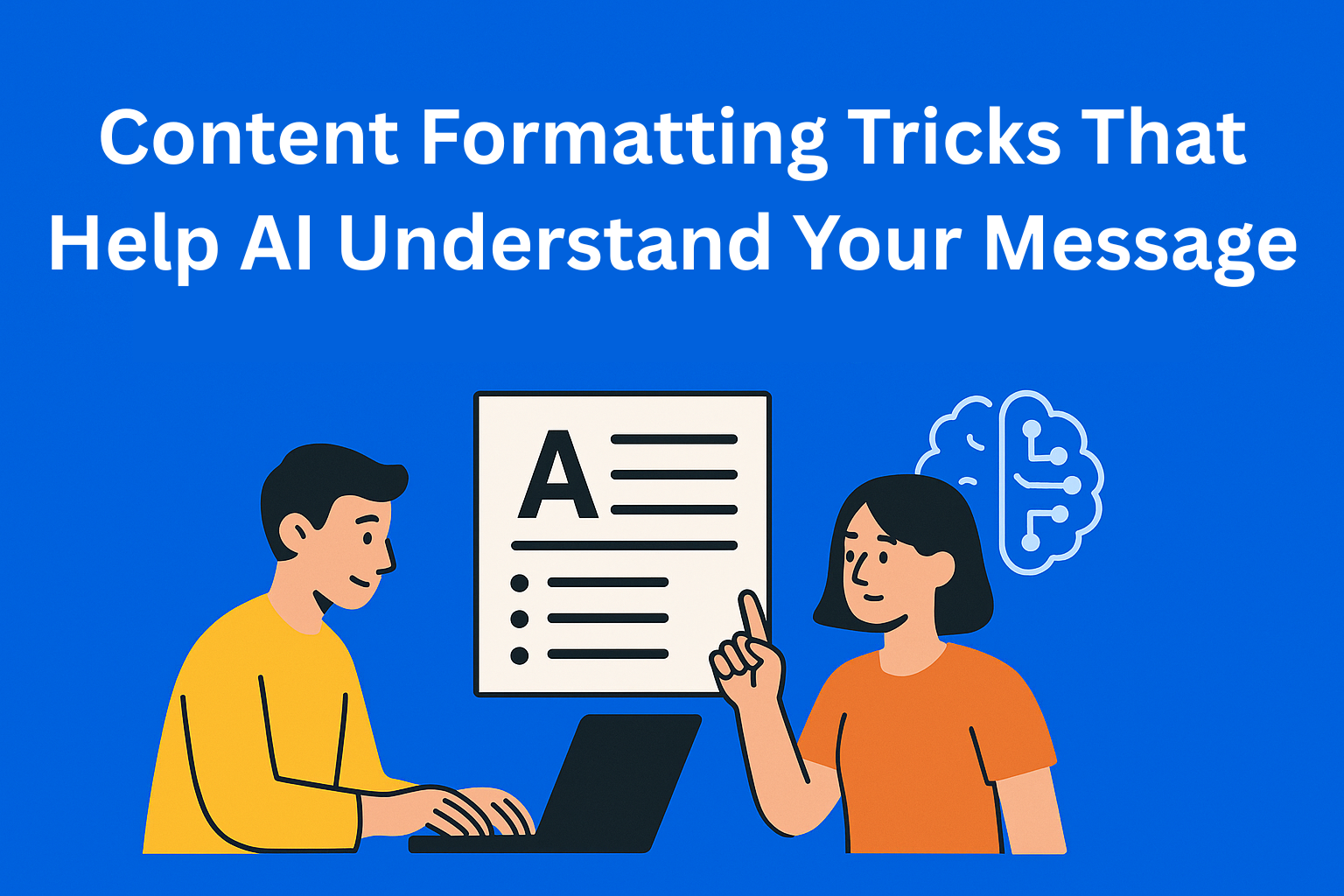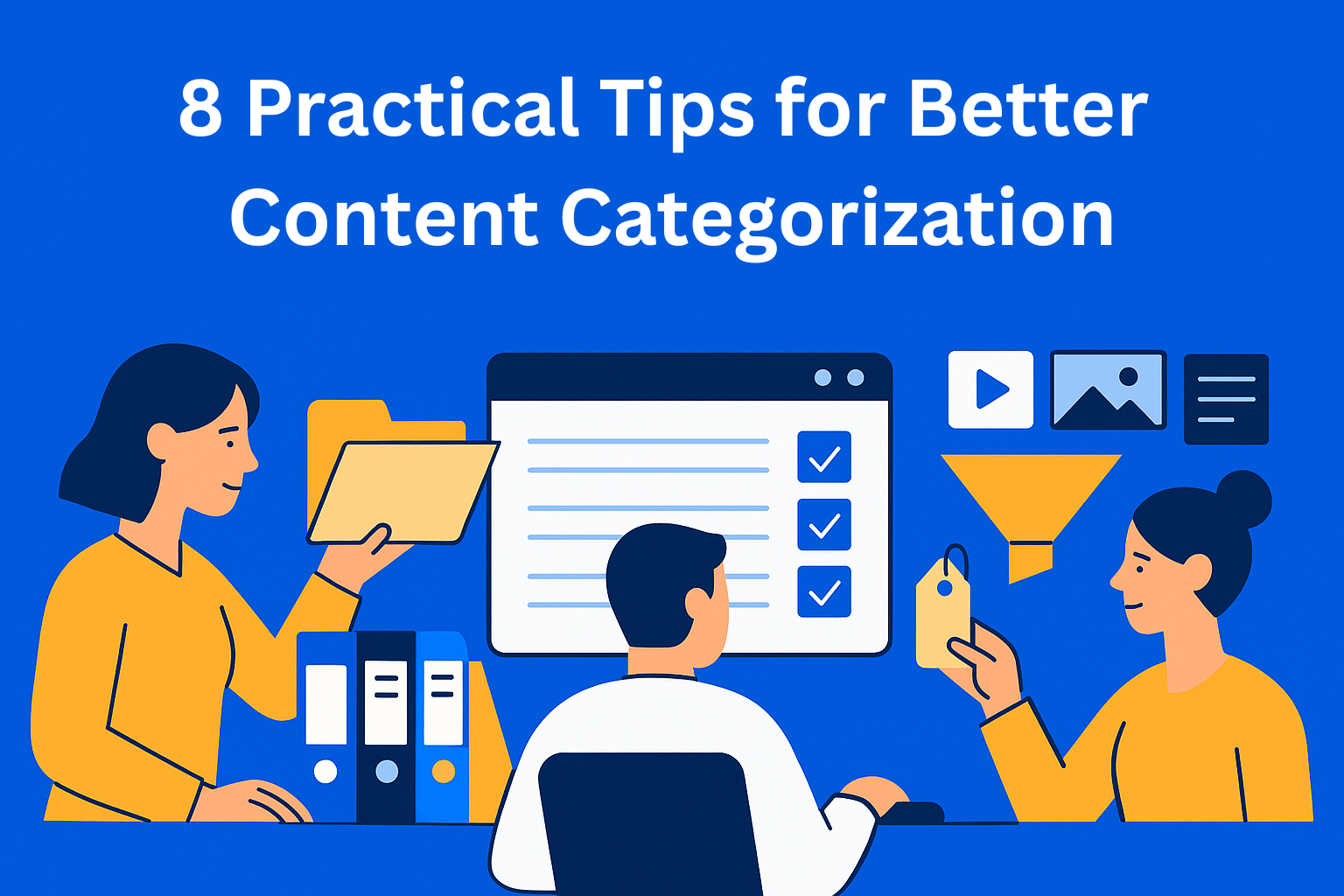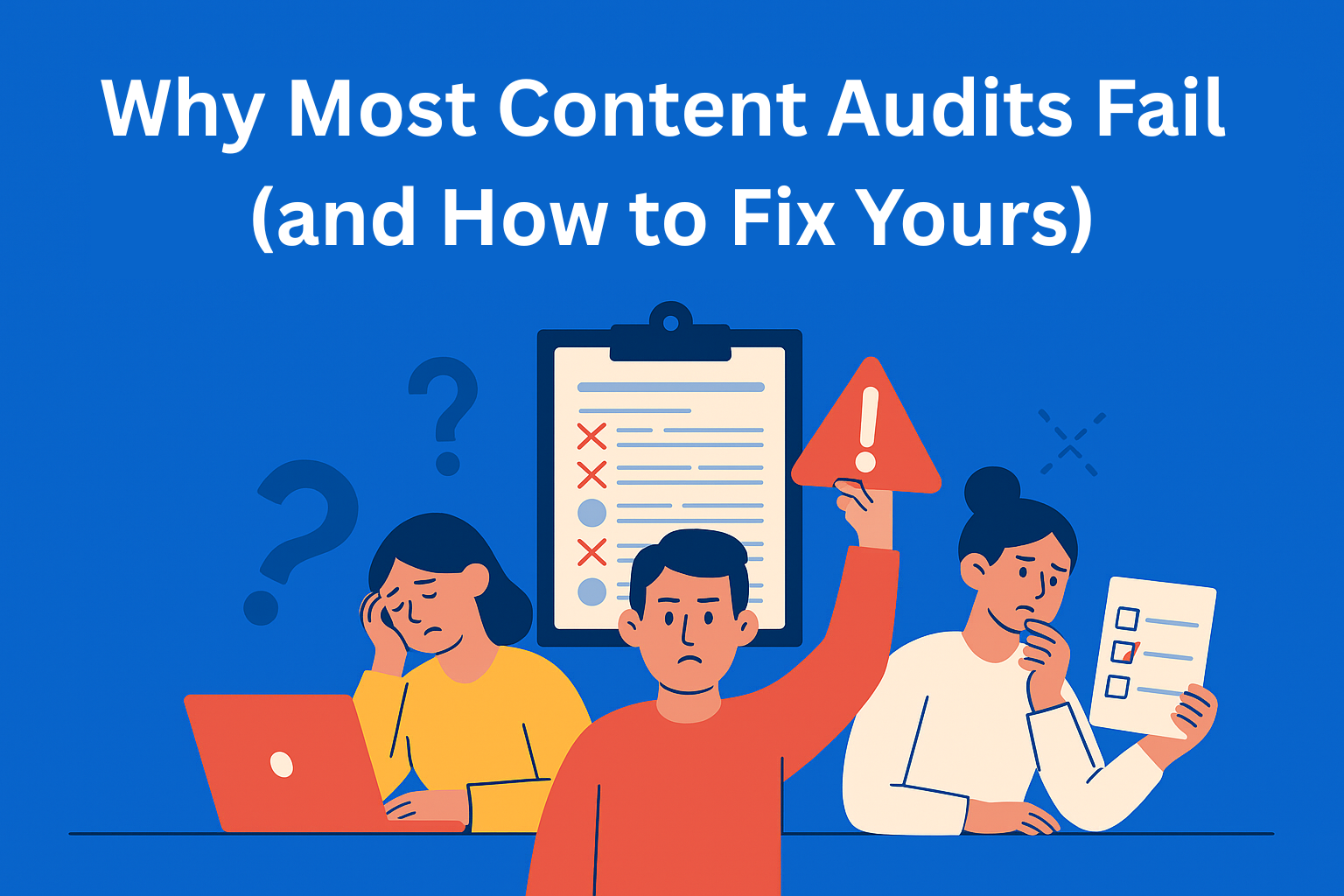Content Formatting Tricks That Help AI Understand Your Message
AI doesn’t read your content - it parses it. Clean formatting, clear headings, and structured ideas help models understand and surface your writing as a trusted source users actually see.

AI doesn’t read content the way people do. Humans take in tone, flow, personality, and subtext. Models look for structure, entities, and relationships between ideas. If your formatting makes those signals easy to detect, your content becomes much more “machine-legible” - which is exactly what increases the chances of AI tools surfacing, summarizing, or citing it.
If the model can’t tell what your content is about quickly and confidently, it won’t recommend it. The goal, then, isn’t just to write something valuable - it’s to package the value in a way AI can parse.
Key Takeaways
- AI ranks structure, not style - Models don’t evaluate tone the way humans do; they prioritize clarity of hierarchy, entities, and relationships between ideas.
- Formatting is a relevance signal - Headings, short paragraphs, and bullet points aren’t visual flair - they’re machine-readable markers that make content easier to classify and surface.
- Clear headings = confidence for AI - Specific, descriptive headings help models understand what a section is about, reducing ambiguity and improving extractability.
- Short blocks improve interpretation - Breaking text into smaller conceptual units gives models a cleaner boundary around meaning, making the core point easier to pull out.
- Consistency compounds authority - When formatting, terminology, and structure are uniform across posts, the entire content library becomes more trustworthy and rankable to models.
Why Formatting Matters (Even When the Writing Is Good)
You can have the smartest argument in the world buried inside a thick wall of text… and to an AI model, it may as well not exist. Formatting isn’t decoration - it’s structural markup. It tells the model:
- “This is the main topic”
- “Here is the supporting explanation”
- “These are the key points”
The clearer the structure, the higher the model’s confidence in what you’re really talking about, and how trustworthy the information is.
A paragraph that just talks “around” a topic is harder for AI to assign meaning to than a section that explicitly signals what it’s addressing. Think of it as compressing ambiguity out of your writing.
Headings Are Road Signs for Machines
Headings don’t just help people skim - they create machine-readable anchors. AI models rely on them to detect hierarchy and topical shifts.
A good heading describes exactly what the following section contains. A vague heading forces the model to guess.
For example:
Unclear:
“Getting Started”
Clear:
“How to Create Your First Content Brief”
The second one tells AI what the content is about, how it functions, and where it fits in a knowledge graph. The first forces it to infer context.
Keep Paragraphs Short Enough to Interpret
Long blocks of text give humans fatigue and give models ambiguity. When too many concepts are packed together, the model can’t separate the main point from the supporting idea.
Shorter paragraphs work better because each block becomes its own unit of meaning.
A good rhythm to aim for is:
- 2-4 sentences per paragraph
- One primary idea per section
- Break early, rather than late
This doesn’t just make content “easier to read” - it makes it easier for a model to confidently extract meaning.
Use Bullet Points for Machine-Legible Emphasis
Humans skim bullet points. AI elevates them.
A bullet list signals to a model:
“This is a condensed answer.”
That matters when models are deciding what text is closest to a “ready-made” response to a user query.
Bullet points work best when:
- Each item stands on its own
- Parallel structure is used
- Items are specific - not vague summaries
Weak bullet:
Helpful for formatting
Strong bullet:
Shows the model what was formatted well and why it matters
Name Entities Clearly and Consistently
Models link ideas by detecting named entities - people, tools, processes, places, concepts, frameworks. If the entity is referenced inconsistently, the connection gets weaker.
“Entity clarity” means:
- Use the full name of a platform, not “this service”
- Define a concept once, then reinforce it later using the same phrasing
- Don’t assume context from earlier paragraphs will be “remembered”
This is also why inconsistent style guides slow momentum and dilute ranking signals - especially across a whole content library.
Definitions Help AI Understand (and Rank) You Correctly
When a piece of content briefly defines a term, AI models treat that section as a canonical explanation - which raises the content’s usefulness score.
A clean inline definition looks like this:
“Topical authority” refers to the degree of trust a source has on a specific category of knowledge, based on clarity, depth, and consistency across related content."
One sentence, no fluff, immediately usable by a model. It’s not there for human readability alone - it’s there to lock down semantic clarity.
Consistency Across Posts Matters as Much as the Post Itself
One well-structured blog helps that page. A consistently formatted library helps the entire domain get treated as a reliable source.
This is where most teams fall apart - not because they don’t know how to format, but because consistency is hard to enforce across multiple writers, editors, and publishing habits.
It’s not a formatting problem. It’s a workflow problem.
Where EasyContent Quietly Helps
EasyContent doesn’t “fix formatting” after the fact - it bakes formatting quality into the writing process through:
- Structured templates that enforce hierarchy
- Review stages that surface unclear sections before publication
- Style guide hints that keep terminology consistent
- A shared content library that reinforces cross-post alignment
Writers don’t have to remember to do this manually. Editors don’t have to chase corrections. The structure naturally survives handoffs.
A Quick Checklist to Keep Your Formatting Machine-Legible
Before publishing, ask:
- Does each section have a clearly descriptive heading?
- Are paragraphs short enough for a model to isolate ideas?
- Are bullet points used where an “extractable” answer makes sense?
- Are key concepts named the same way every time?
- Is there at least one clean definition of a core term?
- Would an AI model know what this article is about in the first 15 seconds?
If the answer is “yes” to all of the above - you’ve made your content AI-friendly without resorting to gimmicks or keyword stuffing.
Conclusion
When AI can understand your content, it can recommend your content. Formatting is the bridge. And the more your team can standardize how ideas are presented (not just what is said), the faster you build topical authority in both human and machine terms.






